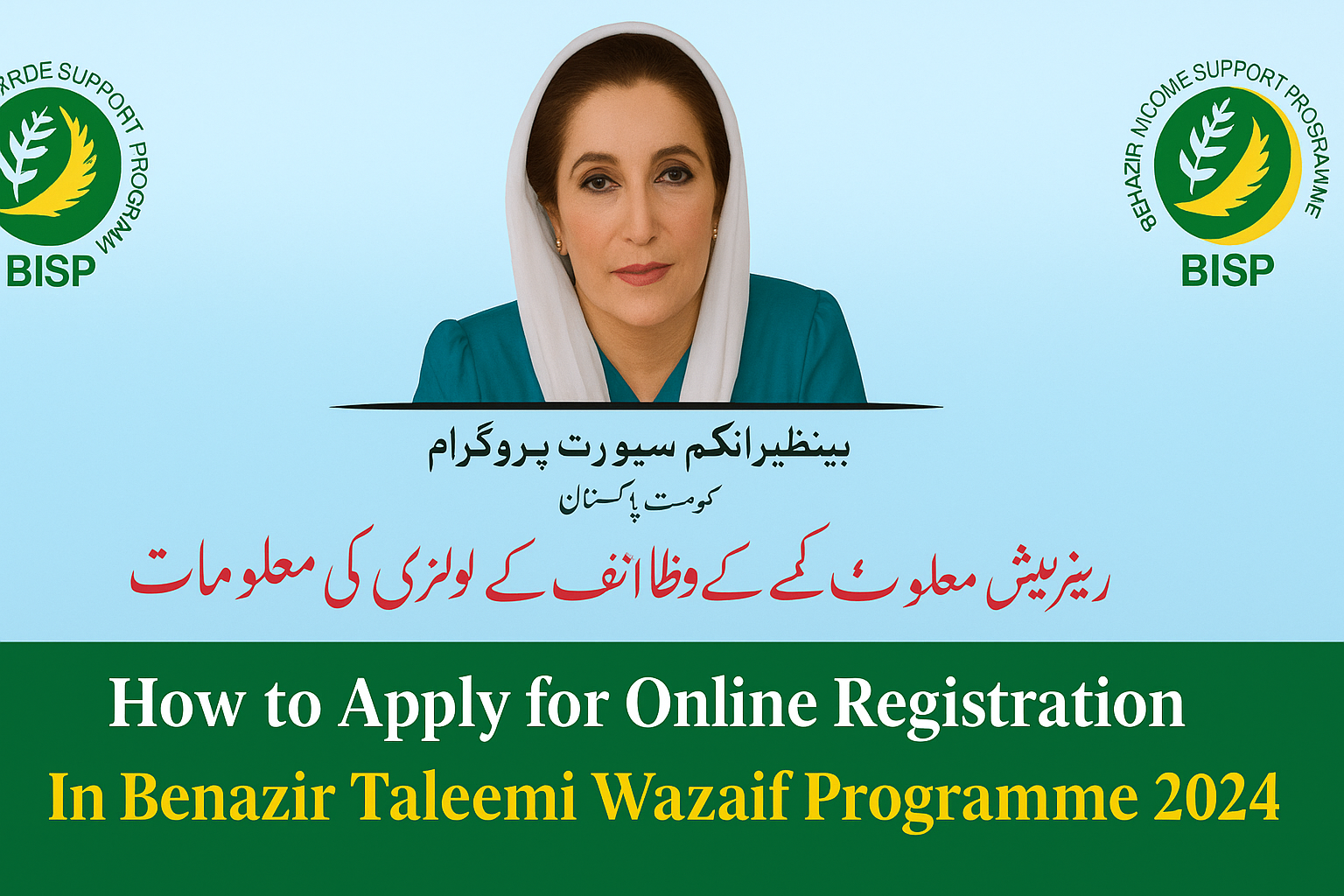AI-Powered Agriculture in Pakistan: Smart Farming Solutions for Rural Communities
This is where AI-powered agriculture in Pakistan emerges as a game-changing solution, offering hope to millions of farmers across rural communities.

Pakistan’s agricultural sector stands at the crossroads of tradition and innovation. With over 60% of the population depending on farming for their livelihood, the country faces mounting pressure to increase crop yields while dealing with climate change, water scarcity, and shrinking farmland. This is where AI-powered agriculture in Pakistan emerges as a game-changing solution, offering hope to millions of farmers across rural communities.
The integration of artificial intelligence in Pakistani farming represents more than just technological advancement—it’s a pathway to food security, economic growth, and sustainable development. From the wheat fields of Punjab to the cotton farms of Sindh, smart farming technologies are quietly revolutionizing how Pakistani farmers grow, monitor, and harvest their crops.
Understanding AI-Powered Agriculture: A Simple Explanation
Artificial intelligence in agriculture refers to the use of smart computer systems that can learn, analyze data, and make decisions to help farmers grow better crops. Think of it as having a super-smart assistant that never sleeps, constantly monitoring your fields and providing valuable insights about when to plant, water, fertilize, or harvest crops.
In Pakistan’s context, AI-powered agriculture combines traditional farming wisdom with modern technology. This includes using sensors to monitor soil moisture, drones to survey crop health, and mobile apps that provide weather forecasts and farming advice in local languages like Urdu, Punjabi, and Sindhi.
The beauty of smart farming solutions lies in their simplicity for end-users. A farmer in rural Bahawalpur doesn’t need to understand complex algorithms. Instead, they receive easy-to-understand recommendations on their smartphone about the best time to irrigate their wheat or when market prices are favorable for selling their produce.
Current State of Agriculture in Pakistan
Pakistan’s agricultural landscape presents both tremendous opportunities and significant challenges. The country ranks among the world’s top producers of wheat, rice, cotton, and sugarcane. However, traditional farming methods, unpredictable weather patterns, and limited access to modern resources have kept productivity levels below their potential.
Most Pakistani farmers still rely on conventional farming techniques passed down through generations. While this traditional knowledge remains valuable, it often lacks the precision needed to optimize yields and minimize waste. Rural communities frequently struggle with:
- Inconsistent water supply and irrigation management
- Limited access to quality seeds and fertilizers
- Unpredictable weather patterns affecting crop planning
- Pest and disease management challenges
- Lack of real-time market information
- Post-harvest losses due to inadequate storage facilities
The agricultural sector contributes approximately 19% to Pakistan’s GDP and employs nearly 42% of the workforce. However, per-hectare yields remain significantly lower compared to other agricultural economies. This gap represents an enormous opportunity for AI-powered agriculture in Pakistan to make a meaningful impact.
Climate change has added another layer of complexity. Extreme weather events, changing rainfall patterns, and rising temperatures are forcing farmers to adapt their practices. Traditional methods alone are no longer sufficient to navigate these evolving challenges.
Smart Farming Technologies Transforming Pakistani Agriculture
Precision Agriculture and Crop Monitoring
Precision agriculture represents the foundation of modern smart farming solutions. In Pakistan, farmers are beginning to adopt GPS-guided tractors, variable-rate fertilizer applicators, and precision planting equipment. These technologies ensure that seeds, water, and nutrients are applied exactly where and when needed.
Satellite imagery and drone technology are revolutionizing crop monitoring across Pakistani farmlands. Farmers can now identify pest infestations, nutrient deficiencies, and irrigation problems before they become visible to the naked eye. This early detection capability is particularly valuable for cash crops like cotton and rice, where timely intervention can prevent significant losses.
Soil sensors are becoming increasingly popular among progressive farmers. These devices continuously monitor soil moisture, temperature, and nutrient levels, sending real-time data to farmers’ smartphones. This information helps optimize irrigation schedules and fertilizer applications, leading to better yields and reduced input costs.
Weather Prediction and Climate Adaptation
Weather forecasting powered by artificial intelligence has become a crucial tool for Pakistani farmers. Advanced weather prediction models analyze vast amounts of data from satellites, weather stations, and historical records to provide highly accurate local forecasts.
Mobile applications like “Crop Reporter” and “Kisan Dost” deliver weather alerts, farming advice, and market prices directly to farmers’ phones. These platforms use machine learning algorithms to provide personalized recommendations based on location, crop type, and farming practices.
Climate adaptation strategies powered by AI help farmers select appropriate crop varieties, adjust planting schedules, and implement water conservation techniques. This is particularly important in regions like Balochistan and Khyber Pakhtunkhwa, where water scarcity poses significant challenges.
Automated Irrigation Systems
Water management remains one of the most critical aspects of AI-powered agriculture in Pakistan. Smart irrigation systems use sensors, weather data, and crop growth models to automatically control water application. These systems can reduce water usage by 20-30% while maintaining or improving crop yields.
Drip irrigation combined with automation is gaining popularity among high-value crops like fruits and vegetables. Farmers can monitor and control their irrigation systems remotely, ensuring optimal water delivery even when they’re away from their fields.
Solar-powered irrigation pumps integrated with smart controllers are particularly beneficial for remote rural areas with limited electricity access. These systems can operate autonomously, adjusting pumping schedules based on solar energy availability and crop water requirements.
Benefits of AI Implementation for Rural Communities
Economic Advantages
The economic impact of smart farming solutions extends far beyond individual farm profits. AI-powered agriculture in Pakistan creates a ripple effect that benefits entire rural communities. Increased crop yields translate to higher farm incomes, which stimulate local economies through increased spending on goods and services.
Reduced input costs represent another significant advantage. Smart farming technologies help optimize the use of seeds, fertilizers, pesticides, and water, reducing overall production expenses. For small-scale farmers operating on tight margins, these savings can mean the difference between profit and loss.
Market access improvements through digital platforms enable farmers to connect directly with buyers, eliminating middlemen and securing better prices for their produce. Mobile applications provide real-time market information, helping farmers make informed decisions about when and where to sell their crops.
Environmental Sustainability
Environmental conservation through intelligent farming practices is becoming increasingly important as Pakistan grapples with climate change and resource depletion. AI-powered systems promote sustainable agriculture by optimizing resource use and minimizing environmental impact.
Precision application of fertilizers and pesticides reduces chemical runoff into water bodies, protecting groundwater quality and aquatic ecosystems. Smart irrigation systems prevent water wastage, helping conserve this precious resource for future generations.
Carbon footprint reduction occurs through optimized machinery operations, reduced chemical inputs, and improved soil health management. These practices contribute to Pakistan’s climate change mitigation efforts while maintaining agricultural productivity.
Social Impact and Food Security
Food security enhancement represents one of the most important benefits of AI-powered agriculture in Pakistan. By increasing crop yields and reducing post-harvest losses, smart farming technologies help ensure adequate food supply for the country’s growing population.
Rural employment opportunities expand as the agricultural sector modernizes. New jobs emerge in areas such as drone operations, data analysis, equipment maintenance, and digital services. This diversification helps reduce rural-to-urban migration by creating attractive employment options in farming communities.
Knowledge transfer and capacity building occur as farmers learn to use new technologies. This educational process enhances overall technical literacy in rural areas, creating a foundation for further technological adoption and innovation.
Successful Case Studies in Pakistan
Punjab’s Smart Agriculture Initiative
Punjab province has emerged as a leader in implementing AI-powered agriculture solutions. The Punjab Information Technology Board (PITB) launched several initiatives to digitize agriculture and provide smart farming services to rural communities.
The “e-Kisan” platform connects over 500,000 farmers with agricultural experts, weather information, and market prices. Machine learning algorithms analyze farmer queries and provide personalized advice on crop management, pest control, and harvesting techniques.
Drone-based crop monitoring pilots in Faisalabad and Multan districts have demonstrated significant improvements in cotton and wheat yields. Farmers participating in these programs reported 15-20% increases in productivity while reducing input costs by 10-12%.
Sindh’s Water Management Success
Sindh province has focused on smart water management solutions to address irrigation challenges in the Indus River basin. Sensor networks monitor canal water levels and automatically adjust flow rates to optimize distribution among different farming areas.
The “Digital Sindh” initiative includes precision agriculture components that help farmers in districts like Larkana and Hyderabad optimize their rice cultivation practices. Satellite-based crop monitoring identifies areas requiring attention, enabling targeted interventions that improve overall field productivity.
Remote sensing technologies have helped detect illegal water diversions and improve overall irrigation system efficiency. This has resulted in more equitable water distribution and reduced conflicts among farming communities.
Khyber Pakhtunkhwa’s Mountain Agriculture
Mountain agriculture in Khyber Pakhtunkhwa faces unique challenges related to terrain, climate, and market access. Smart farming solutions adapted for these conditions include weather-resistant sensors, satellite connectivity for remote monitoring, and mobile applications designed for local languages and farming practices.
Fruit orchards in districts like Swat and Chitral use AI-powered pest and disease management systems. Early warning systems help farmers protect their apple, peach, and cherry crops from common threats, significantly reducing losses and improving fruit quality.
Cold storage management systems powered by IoT sensors and machine learning algorithms help farmers preserve their produce longer, enabling them to access better markets and prices for their fruits and vegetables.
Challenges and Barriers to Adoption
Technical Infrastructure Limitations
Internet connectivity remains a significant barrier to implementing AI-powered agriculture in Pakistan, particularly in remote rural areas. Many farming communities lack reliable broadband access, limiting their ability to use cloud-based agricultural services and real-time monitoring systems.
Electricity supply issues affect the operation of smart farming equipment and sensors. Frequent power outages and unstable voltage conditions can damage sensitive electronic equipment, making farmers hesitant to invest in advanced technologies.
Technical support and maintenance services are often unavailable in rural areas. Farmers need local technicians who understand both agricultural practices and modern technology to provide ongoing support for smart farming systems.
Financial Constraints
High upfront costs for smart farming equipment represent a major obstacle for small-scale farmers. While the long-term benefits are clear, many farmers cannot afford the initial investment required for sensors, drones, automated irrigation systems, and other AI-powered tools.
Limited access to agricultural credit specifically designed for technology adoption prevents many farmers from financing smart farming solutions. Traditional lending institutions often lack understanding of modern agricultural technologies and their potential returns.
Risk aversion among farming communities makes them cautious about adopting new technologies, especially when their livelihoods depend on consistent crop production. Farmers need demonstration projects and success stories to build confidence in AI-powered solutions.
Knowledge and Skills Gap
Digital literacy challenges affect the adoption of smart farming technologies, particularly among older farmers who may be less comfortable with smartphones and digital interfaces. Training programs need to be designed specifically for rural audiences with varying education levels.
Language barriers can limit the effectiveness of AI-powered agricultural services. Many applications and platforms are primarily available in English or Urdu, excluding farmers who primarily speak regional languages like Balochi, Pashto, or Saraiki.
Technical training requirements for operating and maintaining smart farming equipment exceed the current skill levels in many rural communities. Comprehensive training programs are needed to bridge this knowledge gap.
Government Initiatives and Support
National Digital Agriculture Framework
The Government of Pakistan has recognized the importance of AI-powered agriculture in achieving food security and rural development goals. The National Digital Agriculture Framework outlines strategies for technology adoption, infrastructure development, and farmer capacity building.
The Pakistan Agricultural Research Council (PARC) has established dedicated units for precision agriculture and smart farming technologies. These units conduct research, develop local solutions, and provide technical support to farming communities across the country.
Provincial agriculture departments are implementing pilot projects to demonstrate the benefits of smart farming solutions. These initiatives help build farmer confidence and provide valuable data for scaling up successful interventions.
Financial Support Programs
Agricultural development banks are introducing specialized loan products for technology adoption. These financing options often include grace periods and flexible repayment terms that align with agricultural cycles and cash flows.
Subsidy programs for smart farming equipment help reduce the financial burden on farmers. Government support for solar-powered irrigation systems, sensors, and mobile applications makes these technologies more accessible to small-scale farmers.
Tax incentives for agricultural technology companies encourage private sector investment in developing and distributing smart farming solutions. These policies help create a supportive ecosystem for innovation in the agricultural sector.
Capacity Building Efforts
Agricultural extension services are being modernized to include training on smart farming technologies. Extension workers receive specialized training to help farmers adopt and effectively use AI-powered agricultural tools.
Universities and agricultural colleges are updating their curricula to include precision agriculture, data analytics, and smart farming technologies. This ensures that future agricultural professionals are well-equipped to support technology adoption in rural communities.
Public-private partnerships facilitate knowledge transfer and technology demonstration. Collaborations between government agencies, technology companies, and farmer organizations help accelerate the adoption of smart farming solutions.
Future Prospects and Opportunities
Emerging Technologies
The future of AI-powered agriculture in Pakistan looks promising with several emerging technologies on the horizon. Blockchain technology for supply chain transparency, advanced robotics for automated farming operations, and artificial intelligence-powered crop breeding programs represent the next wave of agricultural innovation.
5G connectivity expansion will enable more sophisticated real-time monitoring and control systems. High-speed, low-latency networks will support advanced applications like autonomous tractors, real-time video monitoring, and instant data analysis for immediate decision-making.
Edge computing solutions will allow AI processing to occur locally on farms, reducing dependence on internet connectivity while providing faster response times for critical agricultural decisions.
Market Expansion Potential
The Pakistani market for smart farming technologies is expected to grow significantly over the next decade. As success stories multiply and costs decrease, adoption rates will accelerate across different regions and crop types.
Export opportunities for Pakistani agricultural technology companies are emerging as other developing countries seek similar solutions. Local expertise in adapting AI-powered agriculture for challenging conditions creates competitive advantages in regional markets.
Value-added services around smart farming technologies, including data analytics, consulting, and training, represent significant business opportunities for entrepreneurs and existing agricultural service providers.
Integration with Global Supply Chains
Smart farming technologies will help Pakistani agriculture better integrate with global supply chains by providing traceability, quality assurance, and compliance with international standards. This integration opens new export markets and premium pricing opportunities for Pakistani farmers.
Climate-smart agriculture practices supported by AI technologies will help Pakistani farmers access carbon credit markets and sustainability-focused supply chains. These opportunities provide additional revenue streams while promoting environmental conservation.
Digital platforms connecting Pakistani farmers with international buyers will eliminate traditional intermediaries and enable direct access to global markets. This connectivity will help farmers capture more value from their produce while meeting specific quality requirements of international customers.
Conclusion
AI-powered agriculture in Pakistan represents a transformative opportunity for rural communities to improve their livelihoods while contributing to national food security and economic growth. The integration of smart farming solutions with traditional agricultural knowledge creates a powerful combination that can address many of the challenges facing Pakistani farmers today.
Success in implementing these technologies requires coordinated efforts from government agencies, private sector companies, educational institutions, and farming communities themselves. Building the necessary infrastructure, providing adequate training, and ensuring affordable access to smart farming tools are essential steps in this journey.
The future of Pakistani agriculture lies in embracing innovation while respecting traditional wisdom. Smart farming solutions powered by artificial intelligence offer the tools needed to increase productivity, conserve resources, and adapt to changing environmental conditions. As more farmers experience the benefits of these technologies, adoption will accelerate, creating a positive cycle of innovation and improvement.
Rural communities across Pakistan have the opportunity to leapfrog traditional development stages by embracing AI-powered agriculture. This technological transformation will not only improve farm productivity and profitability but also create new opportunities for rural employment, education, and economic development.
The journey toward widespread adoption of smart farming solutions in Pakistan has already begun. With continued support, investment, and commitment from all stakeholders, AI-powered agriculture will play a crucial role in building a more prosperous and sustainable future for Pakistani farming communities.











